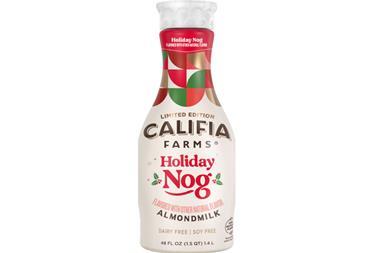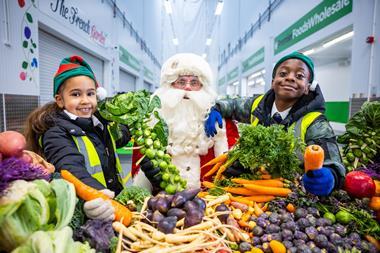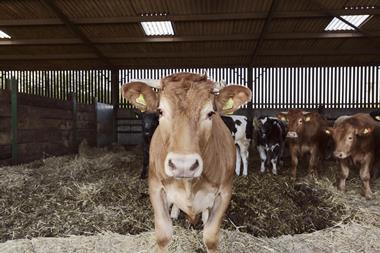
You’d have to be an eternal optimist to foresee anything other than a tough Christmas trading period.
According to MRI Software (formerly Springboard), footfall across UK retail destinations dropped 3.2% in September – the largest month-on-month decline since January – with little likelihood of picking up.
In response, retail is doing everything it can to attract festive shoppers. Many were conscious that people would spread out spend, so Christmas appeared in shops as early as August. And it wasn’t just the usual food items. In September, Liberty launched its beauty advent calendar and Naked Wines followed suit, urging subscribers to order Christmas wine boxes.
This is a logistical strategy, but it leaves two big questions unanswered: how can brands and retailers maintain momentum through to December? And what else can they do to maximise visibility and interest?
Understanding unpredictable mindsets
The key is to understand that shoppers are going into Christmas 2023 with two distinct mindsets.
For many, even those we’d normally characterise as well off, money is tight. They want to reduce risk, avoid waste and stretch budgets, with all three intentions dictating most buying decisions.
But on some occasions, people will behave in contradiction. The drain on joy caused by Covid and the economic downturn will leave many jumping at the chance to treat themselves and their loved ones. A smaller – but still significant – segment may even decide to ‘go big’ for Christmas and let 2024 look after itself. And who can blame them?
This divide is more attitudinal than it is demographic. And it’s worth taking a close look at PwC’s September Consumer Sentiment Survey, because some findings contradict conventional wisdom.
It jumps out that 18 to 24-year-olds are cautious. Spending intentions on discretionary items have fallen off a cliff since June – down 27% for beauty and personal care, versus a decline of 6% for all adults. Intentions among this group are also down 21% for fashion, versus an 8% fall for all adults. It’s definitely food for thought if the default target is Gen Z.
Grocery is another case in point. Faced by skyrocketing bills at checkout, 16% of shoppers are looking to cut back, but not the over-65s: they are unwilling to compromise on Christmas food and drink. So supermarkets may want to think about prioritising treats with a traditional twist.
Winning the next six weeks
In the next few weeks, I predict that much Christmas action will concentrate on four areas.
Firstly, an even greater focus on ‘member pricing’. A key trend throughout the year, this will ratchet up further over Christmas. Big data holders such as Tesco and Sainsbury’s will be super-aggressive in trying to maximise their share of families’ festive budgets. And it won’t just be food they target.
Secondly, a heavy emphasis on financing deals, whether it’s interest-free or buy now, pay later. Helping shoppers to amortise the cost of Christmas may trigger higher-ticket purchases and help stretch budgets.
Next, we’ll see a dive into affordable customisation. When people have less money to spend, gifts that feel ‘thoughtful’ and tailor-made are likely to catch the eye. Retailers like Etsy and Not On The High Street will be able to capitalise on the craving for sentimentality and value.
Finally, fiercer-than-ever competition in social and digital. Christmas may have started in August, but the battle to attract shoppers will rage up to 24 December. Whether it’s leaning into cultural trends or creating their own, brands and retailers will be doing everything they can to win last-minute purchases.
For instance, we see one high street client sending member ‘timed’ promotions to help drive footfall in store with personalised coupons – all driven by a strategy of knowing which shoppers shop when, across category lines, and tailoring coupons to individual members. And it’s working.
Ultimately, for retailers who may feel short on data, systems or tools to compete on these four fronts, my advice is simple: it’s not too late to plug those gaps. I’m a glass half full person and believe there is still time to sprinkle extra magical growth over the golden quarter.



















No comments yet